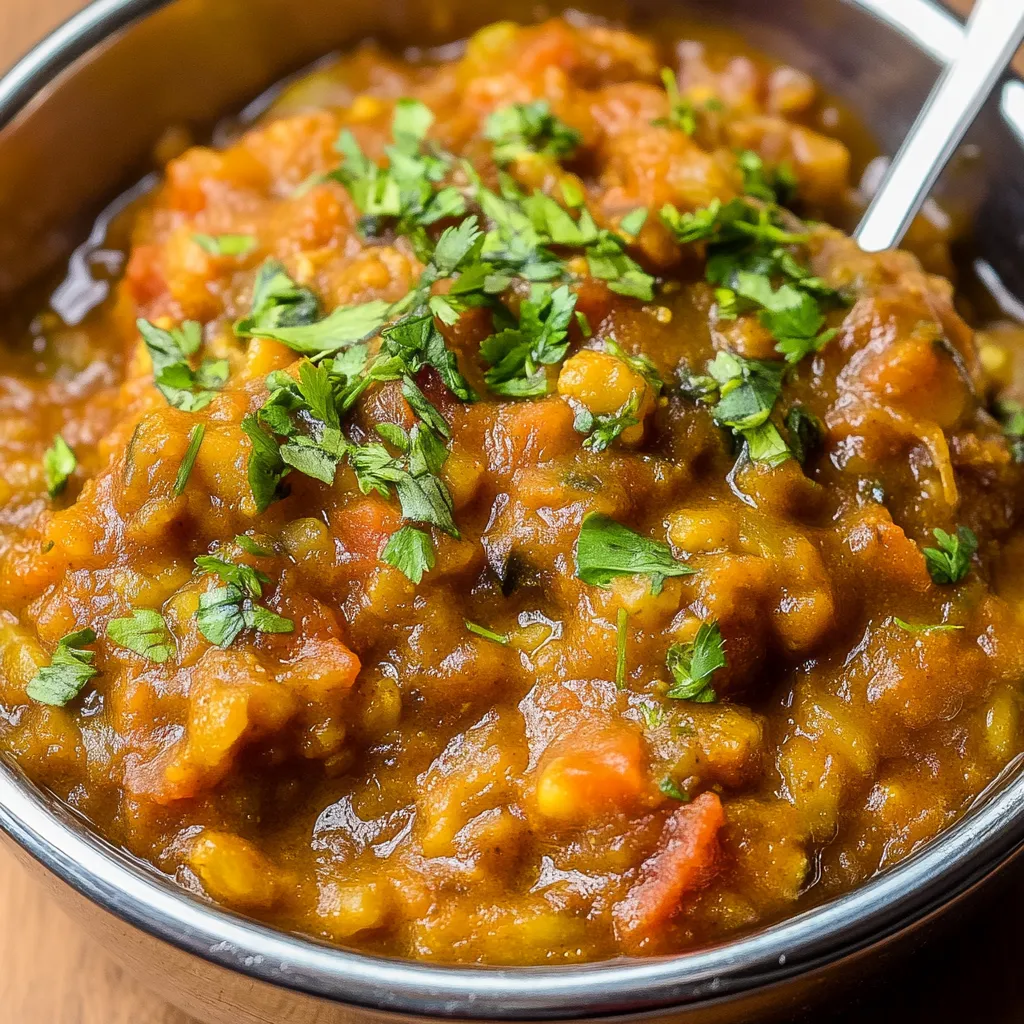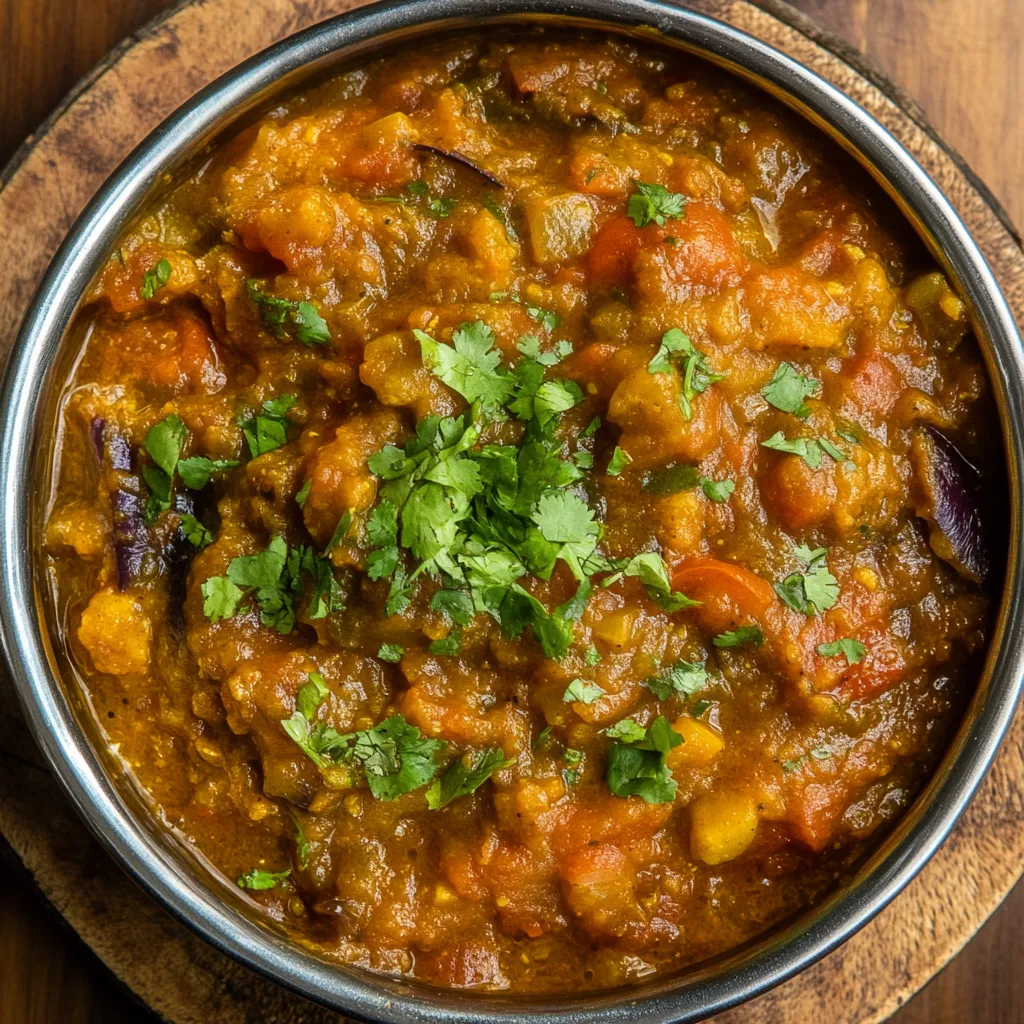 Pin it
Pin it
This Moroccan zaalouk transforms humble eggplant and tomatoes into a vibrant, flavor-packed dip that embodies the essence of North African cuisine in every spoonful. Unlike its Middle Eastern cousin baba ganoush, zaalouk celebrates the marriage of eggplant with bright tomatoes and warming spices, creating a dip that's both comforting and refreshing. The beauty of this recipe lies in its simplicity - everything cooks together in one pot, allowing the flavors to meld into something greater than the sum of its parts.
I discovered zaalouk during a trip to Morocco where it appeared at nearly every meal as part of the mezze spread. What struck me was how different it tasted from the baba ganoush I was familiar with - brighter, more complex, with that distinctive tomato backbone that makes it uniquely Moroccan. Now I make it regularly because it satisfies my craving for something exotic without requiring specialty ingredients or complicated techniques.
Essential Ingredients and Selection Tips
- Large eggplants: Choose firm, glossy eggplants without soft spots; larger ones work better for easier peeling and dicing
- Ripe tomatoes: Use the ripest tomatoes available for maximum sweetness and flavor; canned can substitute in winter
- Quality olive oil: Extra virgin olive oil is essential since it's both a cooking medium and flavor component
- Fresh garlic: Use plump, firm cloves and adjust quantity based on your heat tolerance
- Warm spices: Paprika provides color and mild warmth, while cumin and turmeric add earthiness and complexity
- Fresh cilantro: Essential for authentic flavor; flat-leaf parsley can substitute if cilantro isn't available
- Fresh lemon juice: Brightens the entire dish and balances the rich, earthy flavors
- Quality seasonings: Good salt and freshly ground black pepper make a noticeable difference in the final result
Detailed Cooking Instructions
- Prepare ingredients thoughtfully:
- Peel 1 large eggplant and dice into ½-inch cubes for even cooking. Dice 2 medium ripe tomatoes, mince 3-4 garlic cloves, and roughly chop ¼ cup fresh cilantro, reserving some for garnish.
- Build the flavor base:
- Heat 3 tablespoons olive oil in a medium saucepan over medium heat. Add diced eggplant, tomatoes, minced garlic, 1 teaspoon paprika, ½ teaspoon cumin, ¼ teaspoon turmeric, 1 teaspoon salt, and ¼ teaspoon black pepper. Add a splash of water to prevent sticking.
- Cook covered for tenderness:
- Bring the mixture to a boil, then reduce heat to low, cover, and simmer for 30 minutes, stirring occasionally. The eggplant should be completely tender and breaking down, while tomatoes have released their juices to create a sauce.
- Reduce and concentrate flavors:
- Remove the lid and continue simmering on low heat for 5-10 minutes, stirring frequently, until excess liquid evaporates and the mixture thickens to a chunky consistency that coats the spoon.
- Finish with brightness:
- Stir in 2 tablespoons fresh lemon juice and half of the chopped cilantro. Taste and adjust seasoning with additional salt, pepper, or lemon juice as needed.
- Achieve desired texture:
- Using a potato masher or wooden spoon, mash the mixture to your preferred consistency. For a rustic dip, mash lightly leaving some chunks. For a smoother spread, mash more thoroughly or pulse briefly in a food processor.
- Rest for optimal flavor:
- Transfer to a serving bowl, garnish with remaining cilantro, and let cool to room temperature before serving. Chilling for at least an hour allows flavors to meld beautifully.
 Pin it
Pin it
The key to exceptional zaalouk lies in properly cooking the eggplant until it completely breaks down and becomes creamy. Unlike some eggplant preparations where you want to maintain structure, here the goal is silky, spoon-able texture that absorbs all the aromatic spices and tomato juices.
Spice balance creates the distinctive Moroccan character that sets this apart from other eggplant dips. The combination of paprika, cumin, and turmeric provides warmth without heat, while the cilantro adds freshness that brightens the entire dish. Each spice serves a specific purpose in building the complex flavor profile.
Cooking technique ensures the vegetables meld properly without burning or sticking. The covered simmering phase allows the eggplant to steam in its own juices and the tomato liquid, while the uncovered reduction phase concentrates flavors and achieves the proper consistency.
Texture control gives you complete customization over the final result. Some prefer a chunky, rustic texture that showcases the individual vegetables, while others want a smooth dip perfect for spreading. The mashing step allows you to achieve exactly what you prefer.
Timing the lemon juice addition preserves its bright, acidic qualities while preventing the mixture from becoming too tart during the long cooking process. Adding it at the end maintains that essential brightness that balances the rich, earthy flavors.
The versatility of zaalouk extends far beyond its traditional role as a dip. I use it as a sandwich spread, a side dish for grilled meats, and even as a base for shakshuka-style eggs. Its ability to complement both Mediterranean and Middle Eastern flavors makes it incredibly useful in various menu contexts.
This zaalouk recipe represents everything I love about Moroccan cuisine - bold flavors from simple ingredients, techniques that develop complexity through patience, and results that transport you to another place entirely. Whether I'm serving it to guests who've never experienced North African flavors or making it for myself as a healthy snack, it never fails to impress with its depth and character. It's proof that the most memorable dishes often come from the humblest ingredients treated with care and respect.
Frequently Asked Questions
- → What is zaalouk?
- Zaalouk is a traditional Moroccan dip made from cooked eggplant and tomatoes with spices like cumin and paprika.
- → Can I make zaalouk ahead of time?
- Yes, zaalouk tastes even better the next day. Store it in the fridge for up to 4 days in a covered container.
- → What do you serve with zaalouk?
- Serve zaalouk with warm pita bread, crusty bread, or crackers. It also works great as a side dish with grilled meats.
- → How do I make zaalouk spicier?
- Add red chili flakes or a chopped green chili pepper when you add the other spices to give it more heat.
- → Can I freeze leftover zaalouk?
- Yes, you can freeze zaalouk for up to 3 months. The texture might change slightly but the flavor stays good.
- → Do I need to peel the eggplant?
- Yes, peel the eggplant and cut it into small cubes for the best texture in this recipe.
